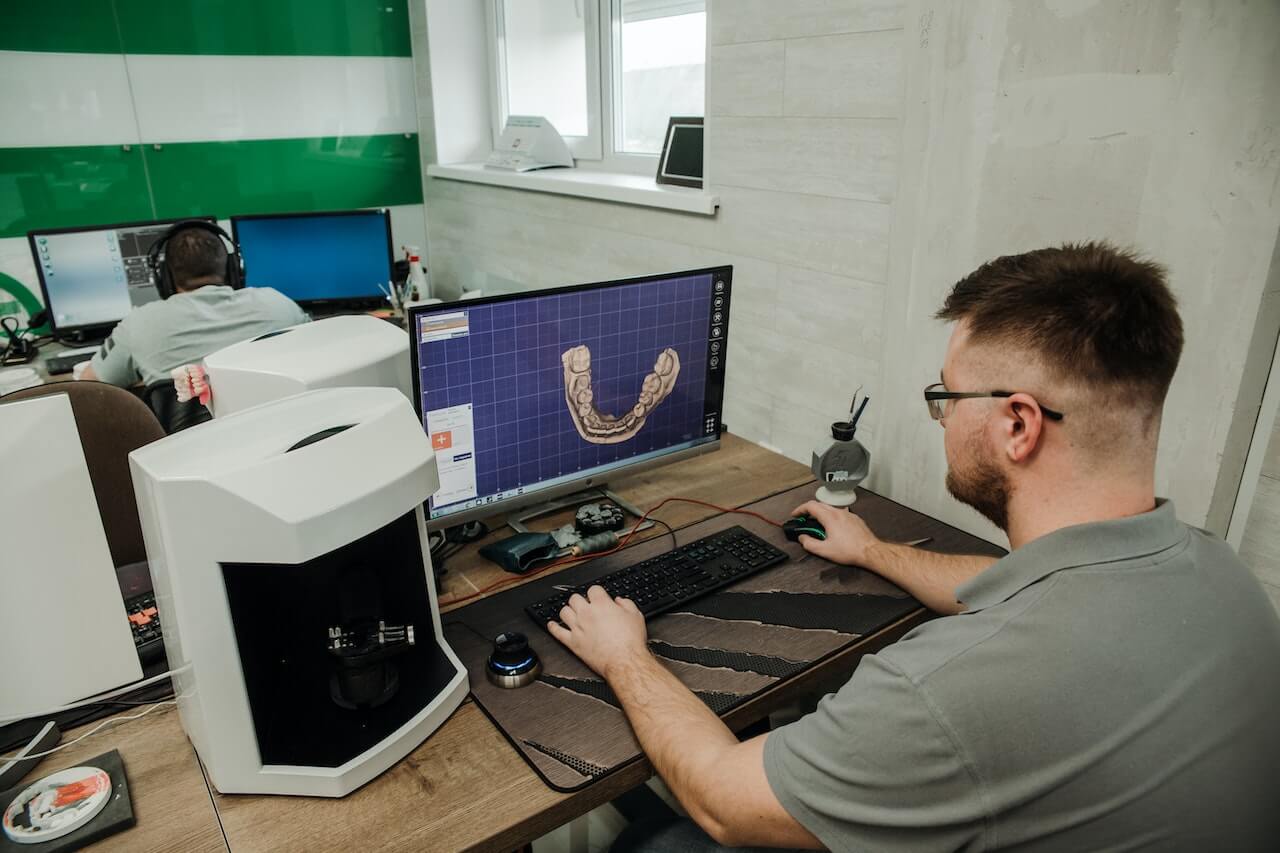The human touch is often overlooked in software development, although it is critical to project success. A dynamic atmosphere that supports innovation and problem-solving is created by the synergy of teamwork, good communication, empathy, lines of code, and technical competence. In this post, we will look at the importance of these human factors by using real-world success stories and tactics for developing a strong team culture.
Collaboration in the Software Development Lifecycle
Collaboration is the glue that holds each phase of the software development process together. Diverse viewpoints assist in a thorough grasp of project goals during the planning and requirements-gathering stages. Collective brainstorming refines ideas into scalable solutions during design and architecture. For efficiency and quality assurance, implementation, testing, and deployment require seamless collaboration among team members.
Successful Projects Driven by Strong Team Collaboration
Revolutionizing Healthcare Management
In this project, a cross-functional team brought together professionals from various domains. The collaboration between developers, designers, and healthcare experts ensured a user-friendly interface and robust functionality. Regular feedback sessions and open communication channels facilitated a smooth workflow, resulting in a successful and impactful software solution.
Overcoming Challenges Through Collaboration
Another project faced unexpected challenges during the implementation phase. The team’s ability to collaborate and adapt to changing requirements proved instrumental in overcoming obstacles. The flexibility and resilience of the team resulted in a successful delivery that exceeded client expectations.
Communication in Software Development
Communication is the lifeblood of any successful software development project. Clear and concise communication ensures everyone understands project goals, timelines, and potential challenges. Ineffective communication can lead to misunderstandings, delays, and a breakdown in collaboration.
Timely Delivery Through Effective Communication
In a project with tight deadlines, effective communication was paramount. Regular stand-up meetings and collaboration tools kept the team aligned and aware of each other’s progress. This transparency enabled timely identification and resolution of potential roadblocks, leading to successful and punctual project delivery.
Overcoming Communication Obstacles
In another instance, a geographically dispersed team faced challenges in communication due to time zone differences and language barriers. Implementing a centralized communication platform and encouraging asynchronous communication helped bridge these gaps, ensuring no valuable insights or updates were lost.
Strategies for Improving Communication within Development Teams
- Regular Team Meetings: Scheduled meetings provide a platform for discussing progress, addressing concerns, and aligning everyone with project goals.
- Open and Transparent Communication Channels: Using platforms that encourage open dialogue helps share ideas and resolve issues promptly.
- Transparent Documentation Practices: Well-documented code, design decisions, and project plans serve as a reference for team members and future developers.
- Utilizing Collaboration Tools: Project management and communication tools streamline workflows and keep everyone on the same page.
Empathy in Software Development
Understanding the Role of Empathy in Team Dynamics
Sympathy goes beyond understanding technical challenges; it involves recognizing and addressing the emotional aspects of working in a team. Acknowledging team members’ unique strengths and perspectives creates an environment where everyone feels valued and motivated to contribute their best.
How Empathy Fosters a Positive Work Environment in software development
A work environment infused with empathy fosters trust, collaboration, and innovation. When team members feel heard and supported, they are more likely to share ideas, provide constructive feedback, and work together seamlessly.
Empathy-driven Success Stories
In a project focused on user experience, empathy played a pivotal role. The team actively sought end-user feedback, empathizing with their needs and challenges. This user-centric approach resulted in a product that met technical specifications and exceeded user expectations.
Click here to read more articles about Software development.
- 4 Effective Ways to Reduce Custom Software Development Cost
- Offshore Software Development Global Perspective!
- A to Z Guideline for Agile Software Development
- Plan Your Software Project Effectively!
Resolving Conflicts Through Empathy
During a challenging phase in a long-term project, conflicting ideas and priorities arose. The team leaders addressed the team members’ underlying concerns through empathetic listening and understanding. This compassionate approach not only resolved conflicts but also strengthened team cohesion.
The Bridge to Understanding in software development
Clear and concise communication is essential for aligning goals, minimizing misunderstandings, and ensuring everyone is on the same page. Effective communication involves:
- Active listening and feedback: Listening attentively to others and offering constructive feedback fosters a culture of understanding and mutual respect.
- Regular meetings and updates: Sharing progress reports, addressing concerns, and discussing upcoming tasks keeps everyone informed and engaged.
- Collaborative tools and platforms: Utilizing shared documents, project management tools, and communication platforms facilitates seamless information sharing and collaboration.
- Transparent documentation: Creating clear and accessible documentation helps individuals understand the project’s goals, progress, and technical specifications.
Building a Strong Team Culture in software development
Importance of a Positive Team Culture in Software Development
A positive team culture is the bedrock of successful software development. It influences motivation, productivity, and the overall satisfaction of team members. Creating a culture that encourages collaboration, open communication, and continuous learning is essential for long-term success.
Strategies for Building and Sustaining a Positive Team Culture
- Team-building Activities: Engaging in activities that promote camaraderie and trust-building enhances team dynamics.
- Recognition and Appreciation: Acknowledging and appreciating the efforts of team members fosters a positive atmosphere.
- Professional Development Opportunities: Providing avenues for skill enhancement and career growth motivates team members.
- Inclusive Practices: Ensuring that all team members feel included and valued, irrespective of their background or role, strengthens team cohesion.
Fostering Creative Problem-Solving in software development
The Link Between Team Dynamics and Creative Problem-Solving
Team dynamics directly impact a team’s ability to tackle challenges creatively. A culture that encourages open communication and values diverse perspectives is more likely to generate innovative solutions to complex problems.
- Cross-functional Collaboration: Bringing together individuals with diverse skills and perspectives promotes creative problem-solving.
- Support for Risk-Taking: Fostering an environment where team members feel comfortable taking calculated risks encourages innovation.
- Encouraging Diverse Perspectives: Actively seeking input from team members with different backgrounds and experiences broadens the range of solutions considered.
- Case Study: Creative Problem-Solving in Action
Innovating Through Cross-functional Collaboration
The team encouraged cross-functional collaboration in a project where a breakthrough was needed. Developers, designers, and business analysts worked closely to understand the problem from multiple angles. This approach led to a unique and innovative solution that exceeded client expectations.
Adapting to Change Through Innovation
When unexpected changes occurred in project requirements, the team embraced the challenge as an opportunity for innovation. The team members’ flexibility and willingness to explore alternative solutions resulted in a successful project outcome despite the initial setbacks.
Conclusion
In conclusion, the human touch is indispensable in software development. Teamwork, communication, empathy, and positive team culture are not mere soft skills but the driving forces behind successful projects. By learning from real-world examples and implementing strategies prioritizing these human elements, software development teams can elevate their performance, foster creativity, and overcome challenges with resilience and innovation. Embracing the human touch ensures that the result is not just a product of code but a testament to the collaborative spirit that defines exceptional software development.


